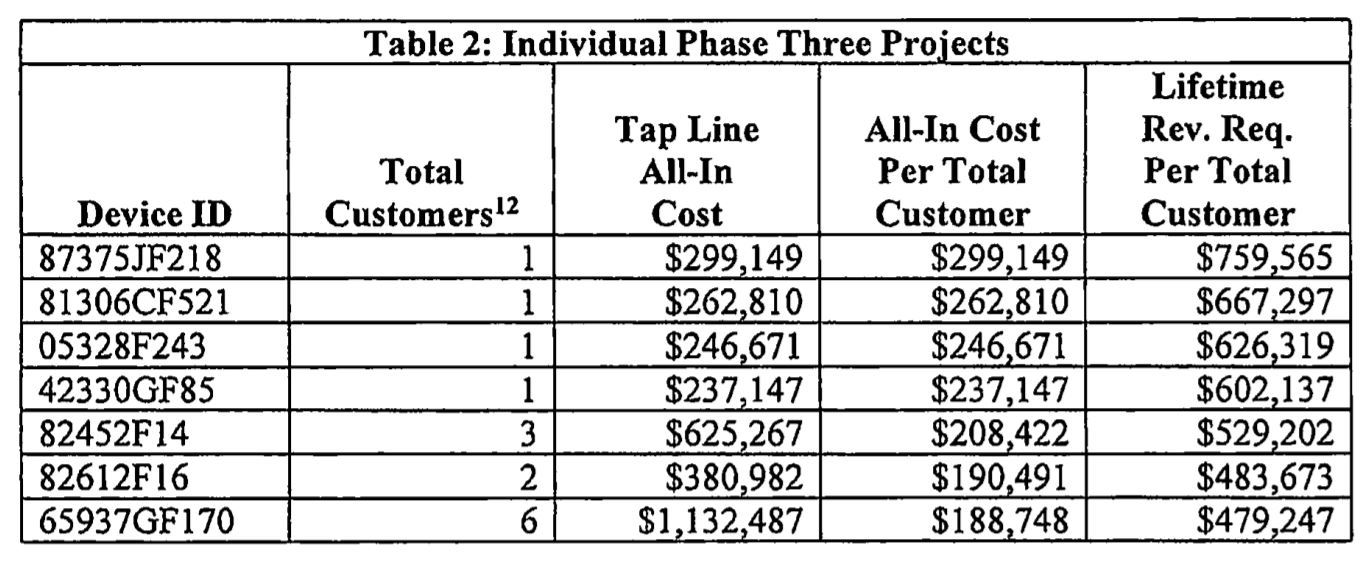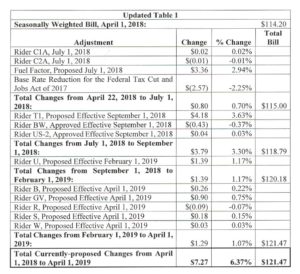
The State Corporation Commission staff audit of Dominion Energy’s ongoing effort to place residential and small business electric service tap lines underground has turned up some expensive examples. A handful of lines will cost ratepayers hundreds of thousands of dollars over time to serve a single residence.
The average cost for the first 18,000 customers getting new lines is about $50,000 each based on my own calculation.
Those are the all-in costs for planning and constructing the lines, then adding the interest cost or profit margin depending on how the utility financed it. The projection uses the current 9.2 percent return on equity. The money is collected over the estimated useful life of the new lines, about 40 years. For phases one, two and three the total cost with financing is about $921 million, according to the SCC staff analysis.
The SCC staff compared the full capitalized cost of installing the highest-cost lines to home values. “This means it is possible in some instances that the company could have purchased the customer’s homes at a lower cost than undergrounding their tap lines,” testified David J. Dalton of the SCC staff.
This program to expand underground lines is something else paid for with a specific monthly charge on everyone’s bill, a rate adjustment clause known as Rider U. It is also something else that the General Assembly has deemed to be in the public interest and virtually off-limits to SCC challenge.

The annual review of the program to adjust the billing charge is underway now and was the subject of a hearing at the SCC Tuesday. With big questions settled by the legislature, the discussion is focused on minor issues such as accounting changes or how the costs are allocated between various classes of customer.
The largest industrial customers are exempt but everybody else under the SCC’s jurisdiction pays, including the 600,000 customers who already have underground service (and paid for it themselves) and the unknown number who will never get underground service. For that mythical average residential customer using 1,000 kwh per month, the current charge is 55 cents per month and Dominion is asking to raise it to $1.98 as of next February.
The legislature has authorized this to go until at least 2028, and Dominion expects to place 4,000 miles of lines underground in 12 phases at a direct cost of $2 billion and a fully-capitalized cost of almost $6 billion. At that point the residential charge will be more like $5 per month. The charge for commercial or small industrial customers was not reported.
Spending other people’s money is very popular. The record on this case includes favorable comments from Senator Glen Sturtevant (R-Richmond), Delegate Vivian Watts (D-Fairfax) and several local officials where the program is active. A spokesman for the American Red Cross attended Tuesday’s hearing in person to testify about that organization’s support, noting how wonderful it is not to have your power go out. At the end he said his own house has already been upgraded under the program.

One point for consumers: Unlike the transmission rate adjustment clause Rider T, Rider U accounting has been adjusted to reflect the lower 21 percent federal income tax rate that went into effect January 1.
The Commission staff raised other questions about the criteria being used to decide where to do this and encouraged more focus on lines that serve larger numbers of customers. Some of its accounting corrections were accepted by Dominion and some others will be up to the judges. This case, however, lacks the drama of earlier face-offs when the SCC staff aggressively challenged this whole idea as a poor investment.
Because of its skepticism, the SCC in 2017 told Dominion to limit phase two to $40 million, but the company blew past that to spend about $100 million. It then wrote into the new statute that it had to be paid for any underground lines installed after September 1, 2016, effectively voiding the SCC’s order.
The SCC is also monitoring the impact of the program, even though the legislature has already decided it is a good deal for customers without waiting for data. Staff is also asking the commission to direct Dominion to provide more info on the benefits to the whole system.
In the long run fewer or shorter outages will increase the company’s revenue and reduce its repair costs. Both of those improve the bottom line on the company’s operations at zero cost or risk to the company. Under traditional electricity ratemaking, if the company’s costs are going down that eventually should lead to lower base rates for everybody. Under Virginia’s 2007 regulatory scheme, the savings might be shared with customers as credits.
But with Dominion Energy’s basic financial operations also off limits to the SCC, per General Assembly orders, and its base rates prevented from going down, any financial benefit from the extra reliability paid for by ratepayers flows to the stockholders.

Leave a Reply
You must be logged in to post a comment.